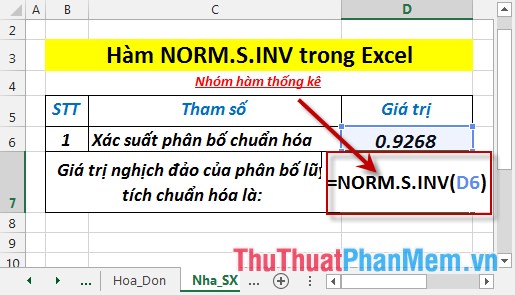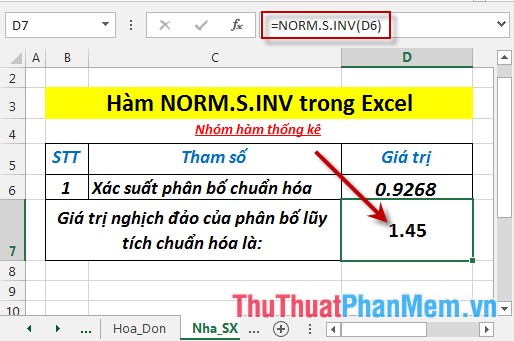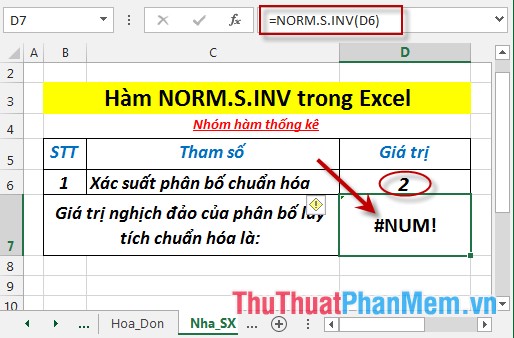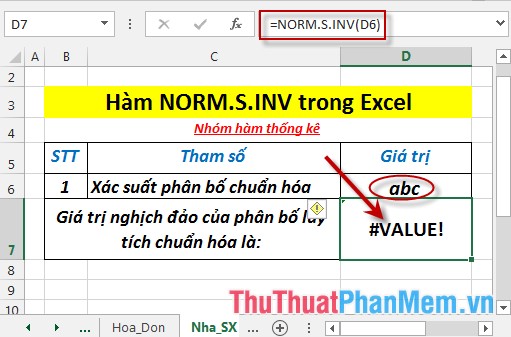NORM.S.INV function - The function returns the inverse of the normalized distribution with an average value of 0 and a standard deviation of 1 in Excel
The following article introduces you to the NORM.S.INV function - one of the functions in the group of statistical functions that is very popular in Excel.

Description: The function returns the inverse value of the normalized distribution with a mean value of 0 and a standard deviation of 1. The function supports Excel 2010 and later versions.
Syntax: NORM.S.INV (probability)
Inside:
- probability: Probability corresponding to the normalized distribution, is a required parameter .
Attention:
- If probability is not number -> the function returns the #VALUE! Error value
- If probability ≤ 0 or probability ≥ 1 -> the function returns the #NUM! Error value
For example:
Find the inverse value of the normal distribution of values in the data table below:

- In the cell to calculate, enter the formula : = NORM.S.INV (D6)

- Press Enter -> the inverse value of the normal distribution function is:

- In case the probability value is greater than 1 or less than 0 -> the function returns the #NUM! Error value

- Where the probability value is not a number -> the function returns the #VALUE! Error value

Above are instructions and some specific examples when using the NORM.S.INV function in Excel.
Good luck!
You should read it
- NORM.DIST function - The function returns the normal distribution with the standard deviation and the mean value specified in Excel
- CONFIDENCE.NORM function - The function returns the confidence interval of the population by using a normalized distribution in Excel
- LOGNORM.INV function - The function returns the inverse of the logarithmic distribution of x in Excel
- NORMDIST function - The function returns the normal distribution with the standard deviation and the average value specified in Excel
- GAMMA.INV function - The function returns the inverse of the gamma distribution in Excel
- GUSSE function - The function returns the probability that an element of the population is normalized in Excel
 PERCENTRANK.EXC function - The function returns the rank of a value in a dataset as a percentage excluding values 0 and 1 in Excel
PERCENTRANK.EXC function - The function returns the rank of a value in a dataset as a percentage excluding values 0 and 1 in Excel PERCENTRANK.INC function - The function returns the rank of a value in a dataset as a percentage including values 0 and 1 in Excel
PERCENTRANK.INC function - The function returns the rank of a value in a dataset as a percentage including values 0 and 1 in Excel PROB function - The function returns the probability that values in a range are between two limits in Excel
PROB function - The function returns the probability that values in a range are between two limits in Excel RANK.EQ function - Function returns the rank of a number in a list of numbers, returns the highest rank when multiple values with the same rank in Excel
RANK.EQ function - Function returns the rank of a number in a list of numbers, returns the highest rank when multiple values with the same rank in Excel Operations with blocks in Excel
Operations with blocks in Excel How to enter formula data in Excel
How to enter formula data in Excel